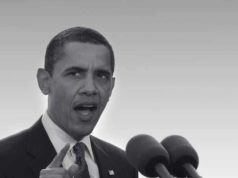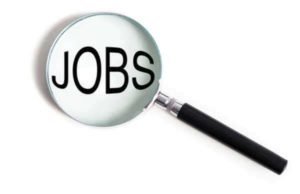
The minimum wage in Wisconsin has gone through several changes over the years. Here is a brief year-by-year list of the minimum wage in Wisconsin:
(Note: The federal minimum wage is also included for reference.)
– 1913: Wisconsin becomes one of the first states to establish a minimum wage, but it was applicable only to women and minors.
– 1938: The federal Fair Labor Standards Act (FLSA) establishes a federal minimum wage of $0.25 per hour, which becomes the standard in Wisconsin.
– 1950: The federal minimum wage increases to $0.75 per hour.
– 1956: The federal minimum wage increases to $1.00 per hour.
– 1961: The federal minimum wage increases to $1.15 per hour.
– 1963: The federal minimum wage increases to $1.25 per hour.
– 1967: The federal minimum wage increases to $1.40 per hour.
– 1974: The federal minimum wage increases to $2.00 per hour.
– 1975: The federal minimum wage increases to $2.10 per hour.
– 1976: The federal minimum wage increases to $2.30 per hour.
– 1978: The federal minimum wage increases to $2.65 per hour. Wisconsin establishes its own separate minimum wage of $2.65 per hour, higher than the federal rate.
– 1980: The federal minimum wage increases to $3.10 per hour.
– 1990: The federal minimum wage increases to $3.80 per hour.
– 1991: The federal minimum wage remains $3.80 per hour, and Wisconsin reverts to the federal rate, aligning with the national standard.
– 1997: The federal minimum wage increases to $5.15 per hour.
– 2008: The federal minimum wage increases to $6.55 per hour.
– 2009: The federal minimum wage increases to $7.25 per hour, where it currently stands as of 2021.
It’s important to note that Wisconsin has not established a separate minimum wage higher than the federal rate since 1991. Efforts have since been made to pass legislation to increase the state minimum wage, with ongoing discussions about potentially raising it to $15 per hour in the future.
The Minimum Wage Landscape in Wisconsin
From Labor Struggles to Economic Equity: A Timeline of the Minimum Wage in Wisconsin
Introduction:
The minimum wage has long been a focal point of debates surrounding workers’ rights, economic stability, and income inequality. This article provides a comprehensive timeline of the minimum wage in Wisconsin, tracing its evolution from labor movements in the early 20th century to recent legislative developments. By examining key milestones, legislative actions, and their social and economic implications, we gain insights into the ongoing struggle for economic equity in Wisconsin.
1. Early Labor Movements and Calls for a Minimum Wage:
In the early 20th century, Wisconsin witnessed growing labor movements and worker-led campaigns advocating for fair wages and better working conditions. Organizations such as the Wisconsin Industrial Commission and Wisconsin Federation of Labor pushed for the establishment of a minimum wage to address exploitative practices by employers.
2. The First State Minimum Wage Laws:
In 1913, Wisconsin became a pioneer as one of the first states to enact a minimum wage law, setting a precedent for progressive labor regulations. The law applied only to women and minors, intended to protect vulnerable workers from exploitation and ensure a basic standard of living.
3. The Great Depression and the Federal Minimum Wage:
The economic devastation of the Great Depression prompted increased calls for federal intervention in workers’ wages. In 1938, the Fair Labor Standards Act (FLSA) was passed at the federal level, establishing a national minimum wage that became the standard across the United States, including Wisconsin. The initial rate under the FLSA was set at $0.25 per hour.
4. Adjustments and Amendments:
Over the years, adjustments and amendments to the federal minimum wage influenced Wisconsin’s minimum wage policies. Legislative changes at the federal level impacted Wisconsin workers, necessitating periodic evaluations of state policies to ensure compliance with federal standards.
5. Wisconsin’s Separate Standard:
In 1983, Wisconsin attempted to establish its own minimum wage rate separate from the federal standard. The Wisconsin Equal Rights Division set the state minimum wage at $2.65 per hour, exceeding the federal rate at the time. However, the state’s ability to enforce the separate standard faced legal challenges, and it eventually deferred to the federal rate.
6. The Great Recession and the Push for Higher Minimum Wages:
The economic impact of the Great Recession renewed discussions about income inequality and the need for higher minimum wages. Advocacy groups, workers’ unions, and community organizations mobilized to raise awareness about the struggles faced by low-wage workers, leading to renewed efforts to increase the minimum wage.
7. The State’s Response: Increased Minimum Wage:
In recent years, Wisconsin has seen incremental increases to its minimum wage. In 2014, Governor Scott Walker signed a law that repealed the state law setting a minimum wage higher than the federal rate, aligning Wisconsin with the federal standard. However, in response to continued calls for higher wages, some municipalities, such as Madison and Milwaukee, introduced local ordinances to establish higher minimum wages within their jurisdictions.
8. Current State Minimum Wage:
As of 2021, the federal minimum wage stands at $7.25, the same as Wisconsin’s minimum wage. However, there are ongoing efforts by lawmakers and advocacy groups to increase the state’s minimum wage. Proposed legislation seeks to implement a gradual increase to $15 per hour, acknowledging the mounting evidence of the economic benefits of higher minimum wages.
Conclusion:
The timeline of the minimum wage in Wisconsin reflects the state’s role in labor movements and legislative progress. From early labor struggles to federal intervention, Wisconsin has experienced shifts in policies aimed at protecting workers and addressing income disparities. While the state’s minimum wage currently aligns with the federal standard, efforts persist to implement higher wages that reflect the cost of living and promote economic equity. By studying this timeline, we gain a deeper understanding of the ongoing fight for fair compensation, worker rights, and economic justice in Wisconsin.
The minimum wage is a contentious and widely debated issue across the United States, and Wisconsin is no exception. As the cost of living continues to rise, policymakers, workers, and businesses grapple with questions about the minimum wage’s impact on economic stability, income inequality, and workforce productivity. In this comprehensive article, we will delve into the minimum wage landscape in Wisconsin, examining its history, current status, and the broader implications of minimum wage policies.
Historical Context
To understand the minimum wage situation in Wisconsin, it is essential to examine the historical developments that have shaped it. The federal minimum wage was first established in 1938 as part of the Fair Labor Standards Act. Wisconsin, like many other states, initially adhered to the federal minimum wage standards.
However, Wisconsin’s approach to the minimum wage evolved over the years. In 2009, then-Governor Jim Doyle signed into law an increase in Wisconsin’s minimum wage, exceeding the federal rate. The state continued to maintain a minimum wage higher than the federal level until 2011 when Governor Scott Walker signed a bill that aligned Wisconsin’s minimum wage with the federal rate of $7.25 per hour.
Current Minimum Wage in Wisconsin
As of my last knowledge update in September 2021, Wisconsin’s minimum wage remained at $7.25 per hour, in line with the federal minimum wage. However, it’s crucial to note that the minimum wage landscape is subject to change due to state legislative actions and evolving federal policies. Therefore, readers are encouraged to consult the most recent government sources for up-to-date information.
Impact of Minimum Wage on Workers
1. Income Adequacy: One of the primary arguments for raising the minimum wage is to ensure that workers earn a wage that allows them to meet their basic needs, such as housing, food, and healthcare. Low wages can lead to financial instability, reliance on public assistance programs, and difficulty in making ends meet.
2. Poverty Reduction: Proponents of a higher minimum wage argue that it can be an effective tool in reducing poverty rates. By increasing the wages of low-income workers, it is possible to lift many individuals and families out of poverty or reduce their reliance on government assistance.
3. Improved Quality of Life: A higher minimum wage can enhance the overall quality of life for low-wage workers by providing them with more financial security. This, in turn, can lead to better mental and physical health outcomes.
Impact of Minimum Wage on Businesses
1. Labor Costs: For businesses, labor costs are a significant factor in their financial sustainability. An increase in the minimum wage can lead to higher labor expenses, impacting profitability, particularly for small businesses with limited resources.
2. Employment Effects: The impact of minimum wage hikes on employment is a topic of ongoing debate. Some argue that raising the minimum wage may lead to job losses as businesses cut back on hiring or even lay off workers to cope with increased labor costs. Others contend that the impact on employment is minimal and that higher wages can improve employee retention and productivity.
3. Consumer Spending: On the flip side, proponents of a higher minimum wage argue that it can stimulate consumer spending. When low-wage workers earn more, they have more disposable income to spend on goods and services, potentially boosting local economies.
Wisconsin’s Approach to Minimum Wage
Wisconsin has generally aligned its minimum wage with the federal rate of $7.25 per hour since 2011. This approach has drawn criticism from those advocating for a higher minimum wage, who argue that it does not adequately address the rising cost of living in the state.
In recent years, there have been efforts to push for an increase in Wisconsin’s minimum wage. Advocacy groups, labor unions, and some lawmakers have proposed legislation to raise the minimum wage to $15 per hour gradually. However, these efforts have not resulted in legislative success as of my last knowledge update in September 2021.
It is crucial to check for updates from government sources or reputable news outlets for any developments on the minimum wage front in Wisconsin.
Federal Minimum Wage and Impact on Wisconsin
The federal minimum wage, although applicable nationwide, has a significant impact on Wisconsin’s labor market and economy. As previously mentioned, Wisconsin’s minimum wage aligns with the federal rate. Therefore, any changes to the federal minimum wage directly affect Wisconsin workers and businesses.
At the federal level, there have been ongoing debates and legislative efforts to raise the minimum wage. Advocates argue that a higher federal minimum wage would benefit workers in states like Wisconsin, where the cost of living may be lower than in more expensive regions of the country. Critics contend that a one-size-fits-all approach to the minimum wage does not consider regional variations in the cost of living and could have adverse effects on businesses in lower-cost states.
Impact on Small Businesses
Small businesses are a vital component of Wisconsin’s economy, and they often face unique challenges when it comes to minimum wage policies. While larger corporations may have more resources to absorb increased labor costs, small businesses may find it more challenging to adapt.
However, it’s important to note that the impact of minimum wage hikes on small businesses can vary widely depending on factors such as industry, location, and business model. Some small businesses may experience minimal disruption, while others may need to make adjustments in terms of pricing, staffing, or operations to remain competitive.
Supporters of a higher minimum wage argue that it can benefit small businesses by stimulating consumer spending and reducing turnover, which can be costly for employers. On the other hand, opponents express concerns about potential job losses and increased operating expenses.
Local Minimum Wage Initiatives
In addition to state and federal minimum wage policies, some local governments in Wisconsin have taken steps to establish their minimum wage rates. These local minimum wage initiatives often aim to address the unique economic conditions and cost of living within their communities.
For example, the city of Madison, Wisconsin, implemented its minimum wage ordinance, which sought to increase the minimum wage for employees working within the city limits. The goal was to gradually raise the minimum wage to $15 per hour by a certain date.
It’s important to note that local minimum wage ordinances can sometimes create complexities for businesses operating in multiple jurisdictions. Employers must navigate varying wage rates and compliance requirements depending on their location.
Public Opinion and Stakeholder Perspectives
Public opinion on the minimum wage in Wisconsin, as in the rest of the United States, is diverse and reflects a range of viewpoints. Advocacy groups, labor unions, business associations, and policymakers all have distinct perspectives on the issue.
1. Labor Unions and Worker Advocates: Labor unions and worker advocacy organizations often champion efforts to raise the minimum wage, emphasizing the importance of fair wages, income equity, and improved working conditions. They argue that a higher minimum wage can reduce income inequality and enhance the overall well-being of workers.
2. Business Associations: Business associations and chambers of commerce typically approach the minimum wage debate with concerns about increased labor costs. They argue that higher minimum wages may lead to reduced hiring, potential job losses, or the need to raise prices, which could adversely affect their members’ profitability.
3. Policymakers: Policymakers in Wisconsin are tasked with balancing the interests of workers, businesses, and the overall economy. Their decisions on minimum wage policies are influenced by various factors, including economic data, public opinion, and political considerations.
4. Economic Researchers: Economists and researchers have conducted numerous studies to analyze the potential impacts of minimum wage hikes. Their findings can vary, but research often considers factors such as employment effects, inflation, and income distribution.
Federal Proposals and National Debate
The minimum wage debate in Wisconsin is part of a broader national conversation about income inequality and worker well-being. While states like Wisconsin have the authority to set their minimum wage levels, federal proposals to increase the federal minimum wage to $15 per hour have gained attention in recent years.
The “Fight for $15” movement, which advocates for a $15 minimum wage, has garnered significant support nationwide. Proponents argue that a $15 minimum wage is necessary to provide workers with a living wage and address income inequality. They point to the rising cost of living in many parts of the country as justification for a higher wage floor.
Opponents of a $15 minimum wage, including some business groups and conservative policymakers, express concerns about potential job losses, especially in industries that rely heavily on low-wage labor. They argue that a significant minimum wage increase could lead to increased automation and reduced job opportunities for low-skilled workers.
Conclusion
The minimum wage landscape in Wisconsin reflects a complex interplay of economic, social, and political factors. While Wisconsin’s minimum wage has historically aligned with the federal rate of $7.25 per hour, there have been ongoing efforts to raise it to $15 per hour, mirroring national debates on the issue.
The minimum wage debate in Wisconsin encompasses a wide range of perspectives, from advocates who emphasize the importance of fair wages and poverty reduction to business groups concerned about labor costs and potential job losses. Policymakers face the challenge of finding a balance that supports both workers and businesses while considering the state’s unique economic conditions.
As the minimum wage issue continues to evolve, it is essential for policymakers, businesses, and workers to stay informed about changes in state and federal minimum wage policies. Wisconsin’s approach to the minimum wage will continue to be a topic of discussion and potential legislative action in the years ahead.
Understanding the Minimum Wage in Wisconsin
It’s very important to know a few details about this thing called minimum wage, particularly in Wisconsin given this is a legal aspect of employment law that can vary from state to state.
The Lowdown on Minimum Wage in WI
Currently, the minimum wage in WI is set legally at $7.25 per hour. That simply means no employee can be allowed to work for less for full-time work. If an employer dictates that any employee must work for a wage less than this, any employee can file a petition and lawsuit with the employer for violation of national employment law.
Here’s the tremendous thing, though, about general minimum wage in Wisconsin….
Other Facts About Minimum Wage in WI
Keep in mind these important facts when thinking about minimum wage in WI:
1. The Job Must Be Full-Time. If Not, the Employer Can Pay Whatever Rate the Employer Wants.
2. The Minimum Wage in WI Can Change From Year to Year Starting Every January 1st.
3. Minimum Wages in Wisconsin Can Even Apply to Piecework or Salary
Understand that when it comes to minimum wage in Wisconsin, you’re looking at a legal condition requiring full-time. Minimum wages in Wisconsin keep the economy going. Part-time jobs and commission jobs, however, don’t fall under the law of minimum wage in Wisconsin. Therefore an employer can pay less than the minimum wages in Wisconsin without penalty.
Moreover, it’s especially important to keep an eye on the law of minimum wages in Wisconsin, as it may change from time to time. Some states differ on their minimum wages; for instance, you can take a look at California and notice that the minimum wage there is $8.00. Obviously, the minimum wage in Wisconsin is completely different.
But based on the economy and budget, the law of minimum wages in Wisconsin can change every year. Luckily, though, you can find out whether or not the minimum wage will change a few months before the new year rings, so you can prepare yourself.
And if you’re worried about jobs involving pay-per-piece or even a salaried position, don’t. Even minimum wage can be calculated with those jobs. For instance:
Consider a full-time job paid by piece – say, $20 per piece. Since the minimum wage for the state of Wisconsin is $7.25, if you land a job requiring you to handle only ten pieces a week at 40 hours per week, do the math and you’ll find that’s actually under the minimum wage.
It’s something that can be contested under employment law with the right attorney. The job market needs to be held accountable, plain and simple.
The same goes for a full-time salaried position without regard to hourly work. If by chance you work well up to 40 hours a week for a salary of less than $290/week, that’s actually under the minimum wage. And it’s against the law.
Knowledge of the Law Is Paramount
When it comes to Employment Law, learning what the minimum wage is for the state of Wisconsin couldn’t be more important. Because there are a lot of jobs out there. Finding the reputable ones would be a challenge; but having Employment Law by your side will be a great help.








































